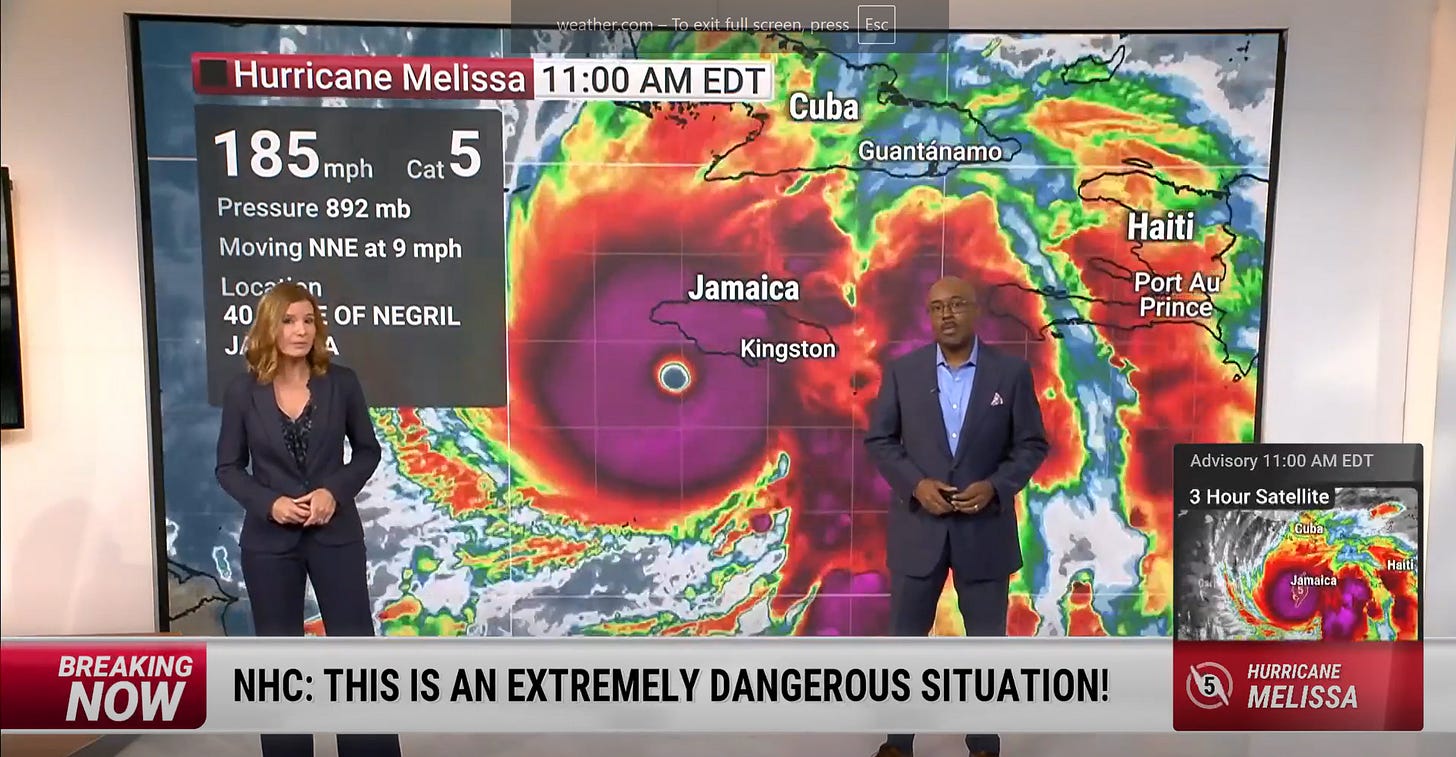Category 5 Hurricane Melissa makes landfall in Jamaica
Records smashed in first-ever Category 5 to hit the island
Hurricane Melissa is making a historic, catastrophic Category 5 landfall in Jamaica today with life-threatening flash flooding, landslides, destructive winds, and storm surge in one of the strongest landfalls on record anywhere in the Atlantic Basin.
In the 174 years of recorded hurricane history — dating back to 1851 — Jamaica has never taken a direct h…
Keep reading with a 7-day free trial
Subscribe to Mesoscale News with Rebekah Jones to keep reading this post and get 7 days of free access to the full post archives.


